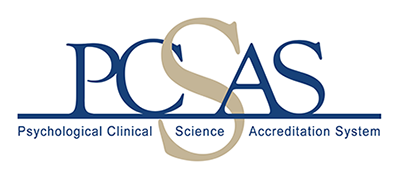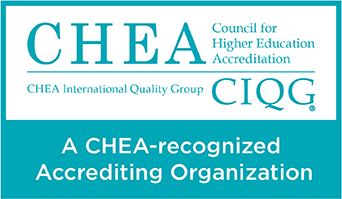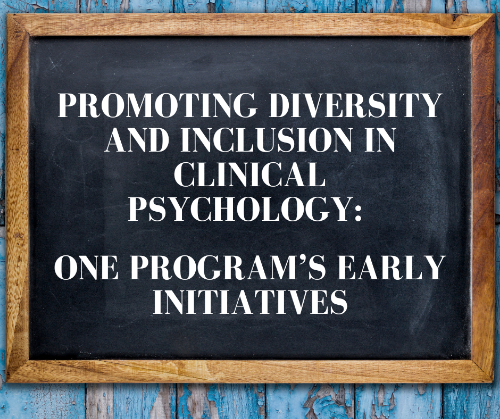by Allycen R. Kurup, Adilene Osnaya, Keisha D. Novak, & Kelly L. LeMaire, Purdue University
In response to racial unrest, clinical psychology departments are likely beginning to implement myriad initiatives to advance diversity and inclusion (D&I) within their graduate training programs and may be seeking examples from other programs. This article details initiatives implemented in a clinical psychology doctoral training program at a predominantly White Midwestern public university. We review both the challenges and positive outcomes of implementing these initiatives within the program.
The D&I committee was established to bring attention to issues of equity and inclusion and to take actionable steps towards improving the culture and climate of the program. Drawing from the model implemented at and documented by the University of Massachusetts Boston (Arbid et al., 2018), we intended to organize a safe, sustainable, and impactful group for faculty and students to explore and discuss D&I issues relevant to our community, as well as to make programmatic changes toward fostering inclusivity, equity, and justice. It is notable that forming the committee itself can be a challenge. As is the case in many clinical psychology programs, faculty and students are often balancing myriad commitments and may face difficulties in finding the time and energy to devote to regular committee meetings and related projects. However, establishing a D&I committee allowed our program to dedicate time and space to identify and begin addressing areas for improvement. Members of the committee and the larger program have reported benefiting personally and professionally from committee initiatives.
Upon forming the D&I committee, we first sought to determine the goals of faculty and students for the committee and subsequent initiatives, beginning by assessing the program’s culture and needs. We conducted a climate survey comprised of separate iterations for faculty and for students, containing both open- and close-ended questions assessing the quality of training on various aspects of diverse identities, general interpersonal and learning climate, and experiences of discrimination in interactions within and across students and faculty. Responses were synthesized then anonymously presented separately to faculty and to students so that both groups had time and space to reflect on the results and form thoughts and potential solutions before coming together. This process appeared to be effective, especially given the sensitive nature of the content.
The survey responses revealed both strengths and areas for growth, reminding us that even when our goal is to be thoughtful and aware of our environment, we can miss important and challenging aspects of its climate for others. We were able to use the survey responses as a springboard to have discussions that are typically seen as taboo, and a mediated discussion was held between the faculty and students to process the responses and generate solutions. We elected to involve a mediator who was not at all affiliated with our program in order to help us to maintain a balance of faculty and student voices in the conversations. Because these were sensitive conversations that challenged the current climate, there were instances in which both faculty and students expressed defensiveness. When this happened, dialectical approaches were often helpful to highlight truth in multiple perspectives. Individuals generally maintained open minds, and all perspectives were given space and explored as avenues for growth in the program. Importantly, participation in the climate evaluation process appeared to be valued; most program members filled out the survey, attended the discussions, and demonstrated willingness to listen to concerns and brainstorm potential solutions.
Our program began addressing highlighted concerns in several ways. Immediately, faculty members sent a joint statement to students validating the difficulties that had been aired. The needs identified by both students and faculty have also resulted in both immediate and impending updates to our Graduate Student Handbook. Additions include limiting workday expectations to a maximum of 10 hours, new policies to help students gain support when facing challenges within and outside of the program, avenues for discussing and implementing needed accommodations, and increased and documented methods for students to be able to provide feedback to faculty.
Furthermore, to prioritize D&I related issues, our department has dedicated several required area-wide meetings such that all program members–especially those outside the D&I committee–have the opportunity to learn about D&I issues and promote an inclusive environment. Specifically, we engaged in an experiential activity called Barnga (Thiagarajan & Thiagarajan, 2006), which allowed us to discuss privilege in-depth. We held a process conversation to understand the impact of the recent Executive Orders which block federally-funded training on anti-racism. We also implemented a yearly clinic case conference that highlights cultural adaptations of CBTs and attention to intersecting identity-related therapeutic experiences.
Within the D&I committee, we develop further initiatives and engage in both didactic and experiential learning. Initiatives have included the development of resource, safe space, and cultural center lists, edits to our program website to reflect accessibility and inclusivity, program-wide efforts to prioritize wellness of graduate students and faculty, and ways to connect with cultural centers on campus and multicultural organizations in our surrounding community. In addition to committee-wide didactic and experiential learning, we also tailor didactics and experiential activities to the unique needs of graduate students and faculty separately, wherein we hold small-group meetings to deeply explore topics such as identity and intersectionality, bias and privilege, disparities in mental health care, and organizational transformation.
While our clinical psychology program has made some progress toward fostering D&I and incorporating it as a core value in the short time since the committee was created, we continue working to assess the program climate and implement initiatives that address D&I issues within an ever-evolving program and sociocultural context. Although needs may differ across programs, we recommend critical assessment of each climate. We suggest taking the time necessary and sitting with the discomfort that may arise to hold space for conversations surrounding D&I issues that are directly impacting each unique program. We believe programs will benefit from exploration of their current state of D&I and working collaboratively to push it forward toward greater equity and justice.
_______________________________________________________________________
References
Arbid, N., O’Donovan, K., Oosting, D., Suyemoto, K. L., & Wadsworth, L. P. (2018, March 21). Creating and Sustaining A Diversity Committee: Process, Development, and Implementation. Diversity Committee – University of Massachusetts Boston. https://www.umb.edu/editor_uploads/images/cla_p_z/DC_Dissemination_Doc_032118_FINAL.pdf
Thiagarajan, S. & Thiagarajan, R. (2006). Barnga: a simulation game on culture clashes. Boston, MA: Intercultural Press.
Disclaimer: The views and opinions expressed in this newsletter are those of the authors alone and do not necessarily reflect the official policy or position of the Psychological Clinical Science Accreditation System (PCSAS).


